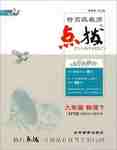题目内容
【题目】 It was a cold day and I had no desire to drive to my daughter Carolyn’s house. But she had insisted I see something on top of the mountain. So here I was, unwillingly making the two-hour journey through fog.
After I parked the car, we walked along a path with thick pine needles and huge evergreens towering over us. Gradually, the peace and silence began to fill my mind. Then we turned a corner and stopped—and I breathed in amazement!
From the top of the mountain, covering several valleys, were rivers of daffodils(水仙花) in bloom. All kinds of colors spread like a carpet before us. It looked as if the sun had spilled gold down the mountainside. At the center hung a waterfall of roses. Here and there were colorful tulips(郁金香). How fantastic the wonder was!
A lot of questions filled my mind. Who created such beauty? Why? How?
Nearing the center of the garden, we saw a sign that read: 'Answers to the Questions I Know You Are Asking.' The first answer was: 'One Woman—Two Hands, Two Feet, and Very Little Brain.' The second was: 'One at a Time.' The third: 'Started in 1958. '
As we drove home, I was so moved that I could scarcely speak. 'She changed the world,' I finally said, 'one bulb at a time. She started almost 40 years ago, probably just the beginning of an idea, but she kept at it.'
【1】The author didn't want to make the trip because __________
A.she didn't want to see her daughter.
B.the road condition was not so good.
C.the weather was bad and the trip was long.
D.the forest was so thick as to make one depressed.
【2】What was the author amazed at after turning a corner?
A.The silent forest.
B.The grand scenery.
C.The tough journey.
D.The colorful tulips.
【3】What can we infer from paragraph 5?
A.The woman created the wonder by herself.
B.The garden was created with others' help.
C.Five people helped make the garden.
D.The garden was soon built.
【4】What does the author intend to tell us from the story?
A.Nothing is impossible to a willing heart.
B.An eye finds more truth than two ears.
C.Chance often favors the prepared mind.
D.He who walks with wise men should be wise.
【答案】
【1】C
【2】B
【3】A
【4】A
【解析】
这是一篇记叙文。文章主要讲述了作者应邀去女儿家,看到了令人惊讶的大片大片盛开的水仙花,并且从花田旁的告示牌知道了:任何事情,只要一步一步的完成,坚持做,最后就能成功。
【1】
细节理解题。根据第一段的It was a cold day and I had no desire to drive to my daughter Carolyn’s house. (天气很冷,我不想开车去女儿Carolyn的家)和 So here I was, unwillingly making the two-hour journey through fog.(现在我到了,不情愿地在雾里走了两个小时)可知,因为天气寒冷,路途遥远,作者不想去女儿家。C. the weather was bad and the trip was long.(天气寒冷且路途遥远)符合以上说法,故选C项。
【2】
细节理解题。根据第三段的From the top of the mountain, covering several valleys, were rivers of daffodils(水仙花) in bloom. All kinds of colors spread like a carpet before us. It looked as if the sun had spilled gold down the mountainside. At the center hung a waterfall of roses. Here and there were colorful tulips(郁金香). How fantastic the wonder was!(从山顶到几个山谷,全是盛开的水仙花。各种颜色的花像地毯一样在我们眼前铺开。就好像太阳沿着山边洒下了金色。这些水仙花的中间挂着一个玫瑰瀑布。到处都是郁金香。这奇观是多么美妙啊!)可知,作者转过弯后因为看到了壮观的景色而兴奋不已。B. The grand scenery.(壮观的景色)符合以上说法,故选B项。
【3】
推理判断题。根据第四段的Who created such beauty? Why? How?(谁创造了如此美丽的景色?为什么?怎么做到的?)和第五段的The first answer was: 'One Woman—Two Hands, Two Feet, and Very Little Brain.' The second was: 'One at a Time.' The third: 'Started in 1958. '(第一个答案是:一个女人——两只手、两只脚、很少动脑。第二个答案是:一次一点点。第三个答案是:始于1958年)可推测,一个女人通过自己的双手、努力和坚持创造了这样的奇观。A. The woman created the wonder by herself.(这个女人靠自己创造了奇观)符合以上推测,故选A项。
【4】
推理判断题。根据最后一段的'She changed the world,' I finally said, 'one bulb at a time. She started almost 40 years ago, probably just the beginning of an idea, but she kept at it.'(最后我说:“她改变了世界,一次一株。她是从40年前开始的,或许只是一个想法的开始,但她坚持下来了。”)可推测,通过这个故事作者想告诉读者:只要一步一步的完成,坚持做,最后就能成功。A. Nothing is impossible to a willing heart.(有志者,事竟成)符合以上说法,故选A项。

 特高级教师点拨系列答案
特高级教师点拨系列答案